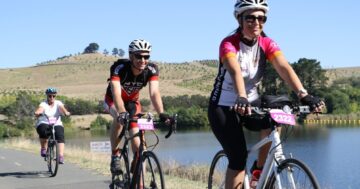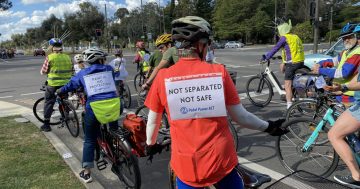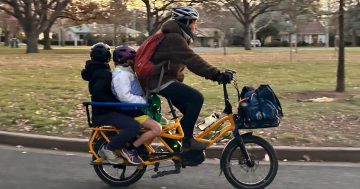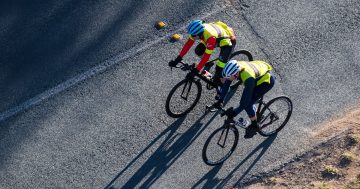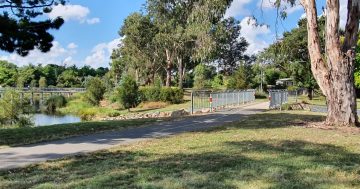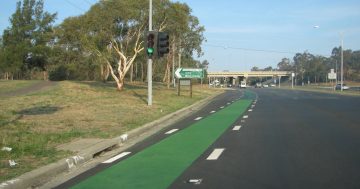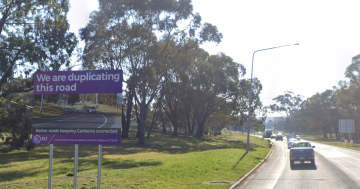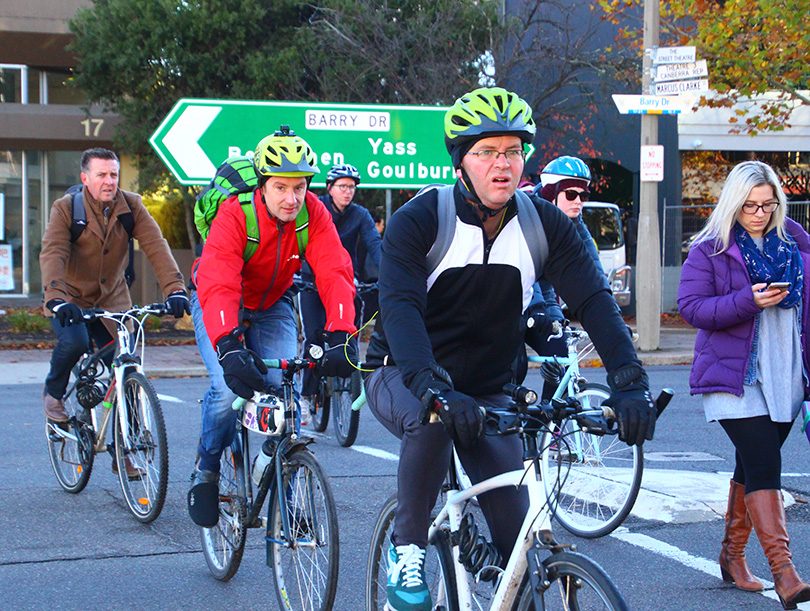
Cycling will help congestion problems. Photo by Pedal Power ACT.
The cost of congestion in the ACT and Queanbeyan is rising. Infrastructure Australia predicts it will increase from $289 million in 2016 to $504 million by 2031.
That is no surprise. Of the 178,244 Canberrans who went to work last Census Day, 144,611 went by car. That’s 81.1 per cent or more than four in five people.
Public transport and walking were a long way behind, at 8 per cent and 5.2 per cent respectively.
The lowest numbers of all? Cycling, with 5,358 people or 3 per cent – about the same as the 2.7 per cent who stayed at home or didn’t answer.
Yet the humble bicycle is the most efficient, most compact, most benign transport device ever invented. It produces no emissions. You can park 10 of them in the same space as one car. A two-way protected bikeway can take 7,500 people an hour; a two-way urban road less than half that.
Many people are now worried about worsening road congestion. They assume the only way to ‘bust congestion’ is to widen roads. Yet this will come at a huge cost to the budget, to the environment, and ultimately to our health and quality of life.
Worse, it doesn’t work. We can’t build our way out of congestion. It’s been known since the 1950s that making it easier and more convenient to drive just breeds more traffic. The congested 26-lane urban freeway in Texas proves that a widened road clogs up again in a few years.
Paris is concerned about congestion and pollution on the Boulevard Périphérique. The response? Cut the speed limit to 50 km/h and cut the lanes from eight to six, discouraging erratic driving and promoting the uptake of alternative travel options.
Building and widening roads won’t get Canberra out of its looming urban snarl, but getting people onto bikes will. Just a small increase in the percentage of our population who commute by cycle each day can take tens of thousands of cars off the road. Better for everyone, and definitely better for the ACT Government’s Net Zero Emissions target of 2045: once we decarbonise electricity by next year, 60 per cent of our emissions will come from the transport sector.
To change our habits, cycling must be resourced as the quickest, safest, and most convenient way to travel around our city: We need a joined-up, whole-of-city cycleway network. We need our network to offer direct routes that are separated from cars and pedestrians, and a well-lit network maintained to the same high standard as our roads currently are.
We need to increase the number of intersections and crossings that prioritise bikes, and more traffic calming on residential streets. We need more bike parking, much of it in car spots. We need to further incentivise the uptake of electric bikes, and invest in a cultural shift that values, supports, and encourages cycling in our community.
It’s all doable, for about the cost of a road-widening project. Many other cities are doing it now because they know they must.
The economic and environmental benefits are compelling. When a city works better for cycling, it works better for everyone – and for the planet. Like any change process, it will need leadership and community support.
Infrastructure Australia has seen the light. Its recent infrastructure audit joins many other voices in calling for governments to act on cycling.
The audit says:
“An integrated transport network has active transport at its core. Walking and cycling play a critical role in our transport networks…
“Active transport also has obvious environmental and health benefits. It produces no direct emissions and helps to improve people’s fitness and wellbeing.
“The benefits of active transport have been recognised by the World Health Organisation, which notes it is key to reducing the 3 million deaths globally each year that are caused by physical inactivity. New technology, such as electrification for bikes and scooters, is providing opportunities for broader groups of people to access the benefits of active transport.
“However, despite its benefits, active transport remains a challenge for Australian policymakers.”
It is also the challenge for Canberra. If we get it right, we can join with HG Wells and say,
“Every time I see an adult on a bicycle, I no longer despair for the future of the human race.”
Ian Ross is the Chief Executive Officer of Pedal Power ACT.












